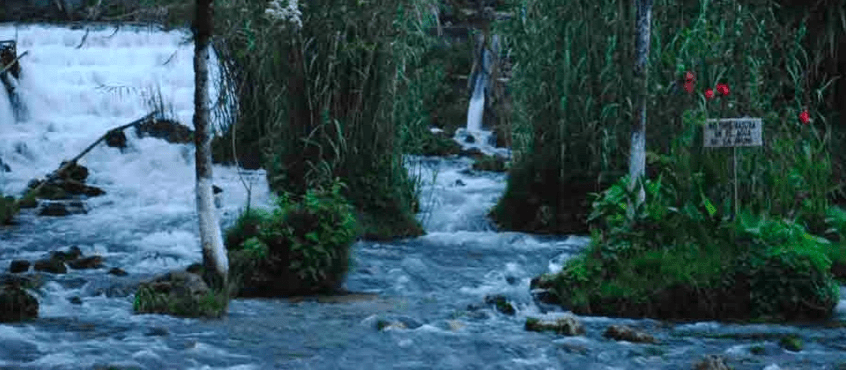Published on 14 March 2018 by ACAFREMIN (Central American Alliance Against Mining).
We are grateful to ACAFREMIN for permission to reproduce the article here.
Translated by Pamela Machado
The Guatemalan ecological group Madre Selva recently published a book narrating the resistance of the Q’eqchí Mayan communities from Santa María Cahabón, in the northern department of Alta Verapaz, to the Oxec and Oxec II hydro-electric projects.
The book, entitled ‘Let’s free our rivers’ and edited by researcher Simona Violetta Yagenova, aims to inform the Guatemalan population about opposition to the ‘privatisation of the rivers’, emphasising the process of ‘defence’ by surrounding communities to stop the development of projects along the Cahabón river and its tributary, the Oxec. The book, supported by the Hienrich Boll Stifting Foundation, brings a historical analysis of the ‘social fight’ against hydro-electric projects.
Both projects belong to the Energy Resources Capital Corp group, registered in Panamá, and they received definitive authorisation to operate from the Ministry of Energy and Mines on 7 August 2013 and 12 February 2015 for Oxec I and Oxec II, respectively.
The investigation narrates how, from 2012 to 2015, the population of Santa María Cahabón had suffered from assassinations and evictions of community settlers, as well as the imprisonment of some of their leaders who opposed the installation of the two projects.
The movement grew from an extensive defamation campaign, which included the criminalization of one of the directors (Bernardo Caal, detained on 5 February [2017] for supposedly committing the offenses of illegal detention and robbery), charges orchestrated by the ‘corporate’ and ‘local powers’, with the connivance of the Executive and Judiciary bodies

Photo credit: latrillamediosindependientes.blogspot.com
The Cahabón river, which is 19,596 kilometers long and spans across the north and east of the country, is made up of over 50 rivers and streams, among those the Oxec,
Canlich and Chiacté, where six hydro-electric plants are currently operating: the Renaces I, II, III and IV (owned by Multiinversiones Corp), the Oxec I and II and the Chichaic.
The construction of many dams, says the document, “seriously changes the fluvial ecosystem” around the riverbeds, “destroying habitats, modifying the flow and changing the basic water parameters.”
After a detailed analysis of the different actions, previous consultations, support and resolutions by the Constitutional entity – that in May allowed the hydro-electric station to continue working despite the fact that a prior consultation, based on ILO Convention 169, had not been held – the Madre Selva publication affirms that there were contradictions in the resolution.
The book concludes that doing “community consultations in good faith are mechanisms of social regulation, conflict resolution and decision making that are collectively built.”
Last December [2017], the Guatemalan Chamber of Industry celebrated the end of a community consultation process led by the Ministry of Energy and Mines, between September and November in 11 neighbouring communities, where they supposedly reached agreements that were then transferred to the Supreme Court of Justice. However, this process was criticised by activist groups like Madre Selva.
When presented with the results, the Minister of Energy, Luis Chang, said that the agreements delivered to the Supreme Court focus on establishing “relationships in an atmosphere of harmony”, and that the company will comply with “environmental mitigations during and after the construction and operation of the project.”
That is a statement opposed by the book ‘Let’s Free Our Rivers’ which holds that the Guatemalan state has historically “deprived the local people in successive historical periods under the flag of development and progress.”
While the Oxec I and II hydro-electric plants are expected to generate around 100 MW per year, hundreds of people and activists warn that the project has left 50 communities without water.